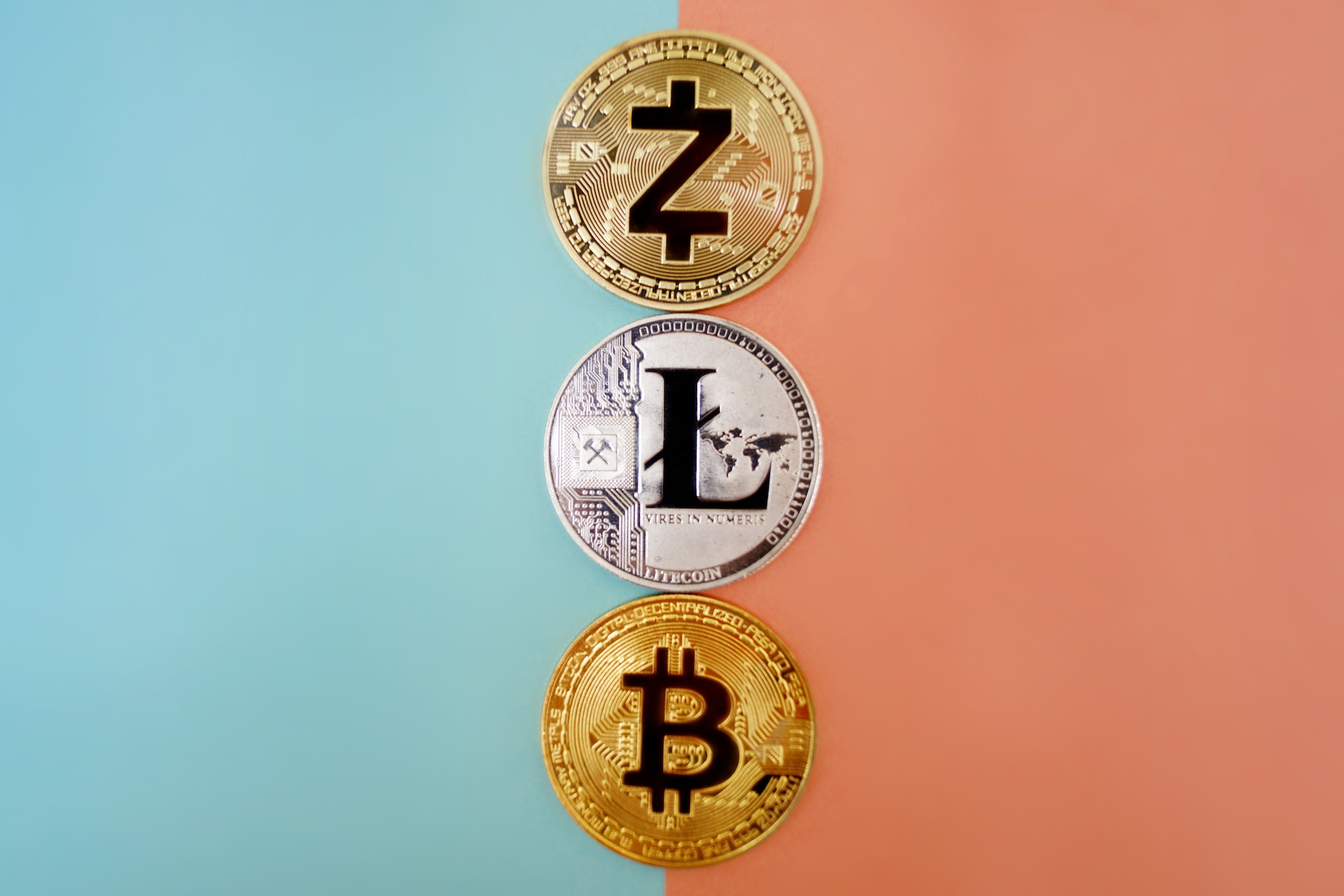Introduction
In the ever-evolving landscape of cryptocurrencies, altcoins have emerged as a captivating avenue for investors seeking diversification and potentially substantial returns. These alternative cryptocurrencies, often distinct from the pioneering Bitcoin, have caught the attention of crypto enthusiasts and investors alike. To embark on this journey successfully, you need a comprehensive understanding of how to buy altcoins, beginning with the basics and concluding with secure storage strategies.
Altcoins, which are short for “alternative coins,” represent a wide array of digital assets beyond Bitcoin. Each of these altcoins comes with its unique features, use cases, and underlying technologies. While Bitcoin remains the most recognizable and established cryptocurrency, altcoins offer an exciting opportunity to explore diverse projects and potentially reap substantial rewards.
The significance of altcoins in a crypto portfolio cannot be overstated. Bitcoin’s dominance in the crypto market has steadily decreased over the years, making room for a multitude of altcoins to thrive. As an investor, diversifying your holdings with carefully selected altcoins can help spread risk and potentially boost your overall returns.
I. Understanding Altcoins
Before delving into the intricacies of purchasing altcoins, it’s crucial to gain a solid grasp of what exactly they are. Altcoins, short for alternative coins, are essentially any cryptocurrency other than Bitcoin. They encompass a vast and diverse array of digital assets, each with its unique features, use cases, and technologies.
The role of altcoins in a crypto portfolio is akin to diversification in traditional investments. While Bitcoin remains a staple, altcoins offer the potential for higher returns but come with added risks. Understanding these fundamental differences is the first step toward successful altcoin investing.
Altcoins can serve various purposes within the crypto ecosystem. Some aim to improve upon Bitcoin’s core technology, such as offering faster transaction times or enhanced privacy features. Others are designed for specific use cases, such as smart contracts, decentralized finance (DeFi), or non-fungible tokens (NFTs).
It’s important to note that not all altcoins are created equal. Some have established themselves as reputable projects with robust communities and real-world utility, while others may be speculative or even fraudulent in nature. This underscores the significance of thorough research and due diligence before investing in any altcoin.
II. Research and Due Diligence
To avoid pitfalls and scams, research and due diligence are paramount when selecting which altcoins to invest in. Start by exploring the technology and the problem the altcoin aims to solve. Assess the team behind the project, their experience, and their track record. Investigate the community support and partnerships.
One key aspect of researching altcoins is understanding the technology they are built upon. Some altcoins, like Ethereum, have introduced groundbreaking innovations such as smart contracts and decentralized applications (DApps). Others may focus on improving scalability, privacy, or governance mechanisms. Evaluating the technical aspects of an altcoin can provide insights into its potential for long-term success.
Examining the team behind an altcoin project is equally crucial. A strong and experienced team with a track record of successful projects is often an indicator of a project’s credibility. Look for transparency regarding team members’ identities and qualifications.
Community support and engagement can also be telling. Active and passionate communities often signify a healthy and vibrant ecosystem around an altcoin. This can be a valuable resource for staying informed about developments and potential risks.
Furthermore, partnerships and collaborations can significantly impact an altcoin’s trajectory. Partnerships with established companies or other blockchain projects can provide access to resources, expertise, and a broader user base.
In addition to online research, consider participating in cryptocurrency forums, social media groups, and attending blockchain conferences. Engaging with the broader crypto community can offer valuable insights and real-world experiences that can inform your decisions.
By conducting thorough research and due diligence, you can make informed choices when selecting which altcoins to invest in, reducing the risk of falling victim to scams or poorly conceived projects. Remember that investing in altcoins should align with your overall investment strategy and risk tolerance.
III. Setting Up a Secure Wallet
Securing your altcoins begins with choosing an appropriate wallet. Wallets are digital tools that allow you to store, send, and receive cryptocurrencies securely. There are several types of wallets available, including hardware, software, and paper wallets.
For the utmost security, hardware wallets are often recommended. These physical devices store your altcoins offline, making them less susceptible to hacking attempts and online vulnerabilities. Examples of popular hardware wallets include Ledger Nano S, Ledger Nano X, and Trezor. Setting up a hardware wallet is a straightforward process that typically involves creating a PIN, generating a recovery seed, and installing the wallet’s software on your computer.
Software wallets, on the other hand, are digital applications or programs that can be installed on your computer, smartphone, or accessed through a web browser. While they are more convenient for day-to-day transactions, they are potentially more vulnerable to malware and hacking if your device is compromised. Popular software wallets include Exodus, Electrum, and Trust Wallet.
Paper wallets, while less commonly used today, provide an additional layer of security. They involve printing your wallet’s private and public keys on a physical piece of paper, which is not connected to the internet. However, it’s essential to keep the paper wallet physically secure, as it can be lost or damaged.
Regardless of the type of wallet you choose, it’s crucial to follow best practices for wallet management:
- Keep your wallet software up to date: Wallet developers often release updates that address security vulnerabilities.
- Enable two-factor authentication (2FA): Whenever possible, activate 2FA for an added layer of security, especially for software wallets.
- Protect your recovery seed: Store it securely and offline. It is the key to recovering your funds in case your wallet is lost or compromised.
- Be cautious of phishing attempts: Ensure that you are using official wallet websites or apps and beware of fraudulent links or downloads.
By setting up a secure wallet and following these best practices, you can significantly reduce the risk of losing your altcoin investments to theft or hacking.
IV. Selecting a Reliable Exchange
Choosing a reputable cryptocurrency exchange that supports the altcoins you’re interested in is the next critical step. Cryptocurrency exchanges serve as platforms for buying, selling, and trading digital assets. Factors to consider include security features, fees, user interface, liquidity, and customer support.
The cryptocurrency exchange landscape is diverse, with numerous options available to users worldwide. To make an informed choice, consider the following factors:
- Security: Prioritize exchanges with robust security measures. Look for features like cold storage of funds, two-factor authentication (2FA), and a history of security practices.
- Fees: Exchanges typically charge fees for trading, withdrawals, and deposits. These fees can vary widely, so it’s essential to understand the fee structure of your chosen exchange.
- User Interface: A user-friendly and intuitive interface can make your trading experience more comfortable. Evaluate the exchange’s website or app to ensure it suits your preferences.
- Liquidity: Liquidity refers to the ease with which you can buy or sell an asset without significantly impacting its price. Larger exchanges tend to have higher liquidity, providing more competitive prices and faster execution.
- Supported Altcoins: Verify that the exchange supports the specific altcoins you intend to purchase. Not all exchanges offer the same range of cryptocurrencies.
- Customer Support: Responsive and helpful customer support can be invaluable, especially if you encounter issues with your account or transactions.
Once you’ve selected an exchange that aligns with your needs and preferences, the next step is creating and verifying your account.
V. Creating and Verifying Your Exchange Account
Creating an account on your chosen exchange and verifying your identity is a straightforward process, but it’s a crucial one. Most exchanges will require identity verification to comply with regulatory requirements and to provide a secure trading environment. Follow the exchange’s guidelines carefully to complete this step.
Here’s a general overview of the process:
- Registration: Visit the exchange’s website and sign up for an account. You’ll typically need to provide a valid email address and create a password. Be sure to use a strong, unique password for added security.
- Identity Verification: To comply with anti-money laundering (AML) and know your customer (KYC) regulations, you’ll be asked to provide personal information and identification documents. This often includes a government-issued ID, proof of residence, and sometimes a selfie for facial recognition.
- Verification Review: The exchange’s verification team will review your submitted documents. This process can take varying amounts of time, depending on the exchange and the volume of verification requests.
- Confirmation: Once your identity is verified, you’ll receive confirmation from the exchange, and you can start using your account to deposit funds and trade altcoins.
Implementing two-factor authentication (2FA) is a simple yet highly effective way to add an extra layer of security to your exchange account. This additional step helps protect your account from unauthorized access, even if your login credentials are compromised.
By completing the account setup and verification process carefully and responsibly, you ensure that your interactions with the exchange remain secure and compliant with regulatory standards. This, in turn, safeguards your altcoin investments.
VI. Funding Your Account
Now that your exchange account is set up, it’s time to fund it with the cryptocurrency or fiat currency of your choice. The methods for depositing funds vary from exchange to exchange, but they generally include bank transfers, credit/debit card payments, and cryptocurrency transfers.
Here’s a breakdown of the typical funding methods:
- Bank Transfers: Many exchanges allow you to deposit funds using traditional bank transfers. This method involves linking your bank account to your exchange account and transferring funds directly. Keep in mind that bank transfers can take several days to clear.
- Credit/Debit Card Payments: Some exchanges offer the convenience of purchasing cryptocurrencies with a credit or debit card. This method is usually faster than bank transfers but may involve higher fees.
- Cryptocurrency Transfers: If you already own cryptocurrencies, you can transfer them directly to your exchange wallet. This is often the quickest way to start trading altcoins.
- Peer-to-Peer (P2P) Trading: Some exchanges offer P2P trading platforms where users can buy and sell cryptocurrencies directly with one another, often using a variety of payment methods, including local bank transfers and digital payment services.
The specific funding options available to you will depend on your location and the exchange’s supported services. It’s essential to review the fees associated with each funding method and choose the one that aligns with your preferences and budget.
Once your account is funded, you’re ready to explore the world of altcoin trading and learn about placing orders and executing trades.
VII. Placing Orders and Executing Trades
Executing trades is at the core of buying altcoins. It’s crucial to understand the various order types and trading strategies to make informed decisions. Market orders, limit orders, and stop-limit orders are the primary order types you’ll encounter.
Market Orders: A market order is a straightforward type of order where you buy or sell an asset at the current market price. This type of order guarantees execution but does not guarantee a specific price. Market orders are typically used when you want to execute a trade quickly, regardless of the current price.
Limit Orders: A limit order allows you to specify the price at which you want to buy or sell an asset. If the market price reaches your specified price, the order will be executed. Limit orders give you more control over the price at which you enter or exit a trade but do not guarantee immediate execution if the market price doesn’t reach your set limit.
Stop-Limit Orders: A stop-limit order combines elements of a market order and a limit order. It involves setting a stop price and a limit price. When the market price reaches the stop price, the order becomes a limit order, and it will only execute at or better than the limit price you’ve specified. This order type is often used to manage risk and enter or exit positions at specific price levels.
Successful trading involves not only understanding these order types but also developing a trading strategy that aligns with your investment goals and risk tolerance. Traders use a variety of strategies, including day trading, swing trading, and long-term investing, depending on their preferences and market conditions.
Risk management is a critical component of trading. It’s essential to set stop-loss orders to limit potential losses and take-profit orders to secure profits when trading altcoins.
By mastering these fundamental concepts and practicing responsible risk management, you can confidently navigate the altcoin market and execute trades that align with your investment strategy.
VIII. Storing Altcoins Safely
Once you’ve successfully purchased altcoins, your next concern should be securing your investment. Transferring your altcoins to a secure wallet is a critical step. Hardware wallets provide a high level of security by keeping your assets offline, away from potential online threats.
To store your altcoins securely, follow these steps:
- Select a Hardware Wallet: Choose a reputable hardware wallet that supports the altcoins you’ve purchased. Examples include Ledger Nano S, Ledger Nano X, and Trezor.
- Set Up the Hardware Wallet: Follow the manufacturer’s instructions to set up your hardware wallet. This typically involves creating a PIN and generating a recovery seed.
- Transfer Your Altcoins: Initiate a transfer of your altcoins from the exchange or software wallet to your hardware wallet. This process involves providing your hardware wallet’s address as the destination.
- Backup Your Recovery Seed: Your recovery seed is a crucial piece of information that allows you to recover your assets if your hardware wallet is lost or damaged. Create multiple copies of the recovery seed and store them securely in separate locations.
- Practice Safe Storage: Store your hardware wallet and recovery seed in a secure place, away from potential hazards like water, fire, and theft. Consider using a safety deposit box or a secure home safe.
- Regularly Update Your Wallet: Keep your hardware wallet’s firmware and software up to date to ensure it remains secure against emerging threats.
By following these steps, you can safeguard your altcoin investments against online threats and potential hardware failures. Remember that the security of your assets ultimately depends on your diligence in protecting your hardware wallet and recovery seed.
IX. Monitoring Your Altcoin Portfolio
Investing in altcoins doesn’t end with the purchase. Regularly monitoring your altcoin portfolio is essential to make informed decisions and adapt to market changes. Numerous
online tools and resources are available to track altcoin prices, market capitalization, and overall performance.
Start by using reputable cryptocurrency tracking websites and apps like CoinMarketCap, CoinGecko, or TradingView. These platforms provide real-time price data, historical charts, and insights into market trends.
Develop a strategy for portfolio management, including periodic reviews and potential rebalancing to align with your investment goals and risk tolerance. Depending on your investment strategy, you may choose to hold altcoins for the long term or actively trade them in response to market developments.
Additionally, stay informed about news and events that could impact the altcoin market. Crypto news websites, forums, and social media platforms can be valuable sources of information. Joining communities related to your chosen altcoins can also provide insights into their development and potential partnerships.
Remember that the cryptocurrency market is highly volatile, and prices can fluctuate rapidly. It’s essential to remain level-headed and avoid making impulsive decisions based on short-term price movements. Instead, focus on your long-term goals and stay disciplined in your approach to managing your altcoin portfolio.
By regularly monitoring your altcoin investments and staying informed about market developments, you can make informed decisions and adapt to changing market conditions effectively.
X. Safeguarding Your Altcoin Investments
To conclude our comprehensive guide on how to buy altcoins, it’s crucial to emphasize the importance of safeguarding your investments. A secure wallet and careful management of your exchange accounts are essential elements of this process. The crypto world is dynamic, and staying vigilant and informed is key to your long-term success.
When it comes to security, consider the following tips:
- Stay Informed: Keep up-to-date with the latest security practices and emerging threats in the crypto space. Knowledge is your best defense against potential risks.
- Use Hardware Wallets: Whenever possible, store your altcoins in a hardware wallet. These devices offer the highest level of security by keeping your assets offline.
- Secure Your Recovery Seed: Protect your hardware wallet’s recovery seed at all costs. Create multiple copies and store them securely in separate locations.
- Practice Safe Online Behavior: Be cautious of phishing attempts, suspicious links, and unsolicited emails. Ensure that you are using official websites and apps for all crypto-related activities.
- Enable Two-Factor Authentication (2FA): Use 2FA on all your crypto accounts, including exchanges and wallets. This extra layer of security helps protect your accounts from unauthorized access.
- Regularly Update Software: Keep your wallet and exchange software up to date with the latest security patches and improvements.
- Diversify Your Holdings: Consider diversifying your altcoin portfolio to reduce risk. Avoid putting all your investments into a single altcoin.
- Stay Disciplined: Stick to your investment strategy and avoid making impulsive decisions based on market fluctuations.
By prioritizing security and adopting responsible practices, you can safeguard your altcoin investments and reduce the risk of falling victim to cyberattacks or fraud.
FAQs (Frequently Asked Questions)
Q1: Are altcoins riskier than Bitcoin?
Altcoins can carry higher risk compared to Bitcoin due to several factors. First, altcoins often have smaller market capitalizations, making them more susceptible to price volatility and liquidity issues. Second, some altcoins are less established and may have unproven technologies or use cases. Lastly, the altcoin market can be more speculative, which can lead to dramatic price fluctuations. While altcoins offer the potential for higher returns, they also come with increased risk. It’s essential to conduct thorough research and carefully assess the risk associated with each altcoin before investing.
Q2: What’s the difference between a hardware wallet and a software wallet?
Hardware wallets and software wallets differ primarily in how they store and manage cryptocurrencies. A hardware wallet is a physical device that stores your private keys offline. It is highly secure because it is not connected to the internet, making it resistant to online threats like hacking and malware. In contrast, a software wallet is a digital application or program that runs on your computer or mobile device. While software wallets are more convenient for day-to-day transactions, they are potentially more vulnerable to online threats. Choosing between the two depends on your security preferences and usage patterns.
Q3: How do I choose the right altcoin to invest in?
Choosing the right altcoin to invest in requires careful research and due diligence. Start by understanding the altcoin’s technology, use case, and the problem it aims to solve. Assess the team behind the project, their experience, and their track record. Investigate the altcoin’s community support, partnerships, and overall adoption. Additionally, consider factors such as market trends, competition, and regulatory implications. It’s essential to have a clear investment thesis and to align your choice with your long-term financial goals and risk tolerance. Diversifying your altcoin investments across multiple projects can also help manage risk.
Q4: Can I store all my altcoins in one wallet?
While it’s possible to store multiple altcoins in a single wallet, it’s generally not advisable to do so. Storing all your altcoins in one wallet creates a single point of failure. If that wallet is compromised, you risk losing all your assets in one go. To enhance security, consider using separate wallets for each altcoin or grouping them based on security levels. For example, you might use a hardware wallet for long-term storage of your most valuable altcoins and a software wallet for those you actively trade. Diversifying your storage methods and keeping backups ensures a more secure approach to altcoin storage.
Q5: What should I do if I forget my wallet’s password or lose access to it?
If you forget your wallet’s password or lose access to it, the recovery seed becomes your lifeline. Here’s what you should do:
- Locate Your Recovery Seed: Find your wallet’s recovery seed. It’s usually a set of words (often 12 to 24) given to you when you initially set up the wallet.
- Use the Recovery Seed: Install the same wallet software on a different device and choose the option to recover an existing wallet using the recovery seed. Enter the words in the correct order.
- Reset Your Password: Once you’ve successfully recovered your wallet, you can reset your password or PIN.
Always keep your recovery seed securely stored, as it is the only way to regain access to your wallet if you forget your password or encounter other access issues.




